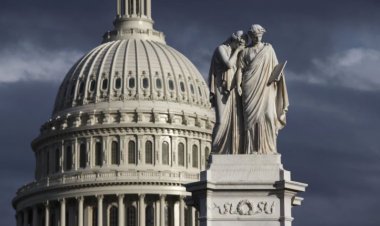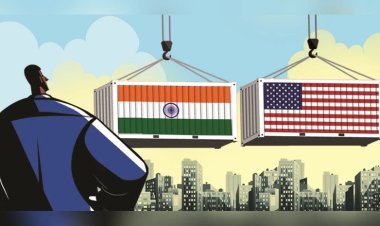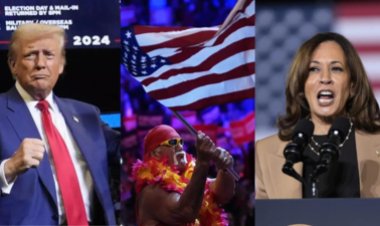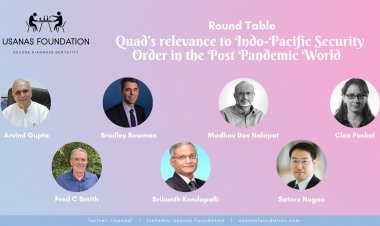The U.S. Doesn’t Understand Indian Diplomacy
In today’s polarized world, India’s hallmark “tightrope” balancing between rival power blocs and nations does not always sit well with the Western foreign ministries.
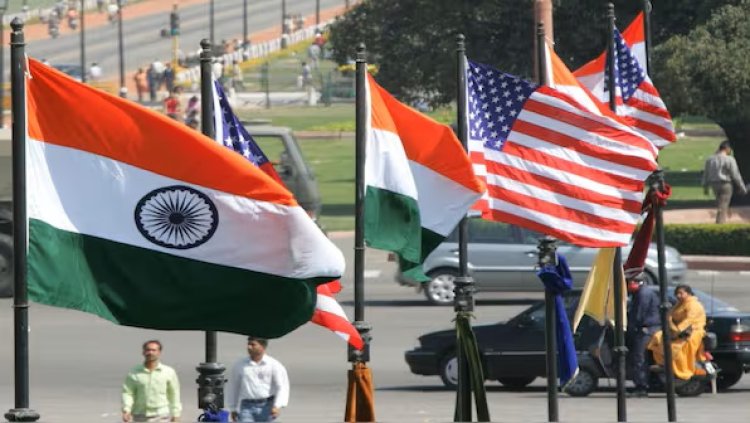
Analysis
By Dr. Abhinav Pandya
During the early phase of the Russia-Ukraine conflict, India faced tremendous pressure from the West, particularly the United States, to align with the United States-led Western bloc and condemn Russia in unequivocal terms. However, India maintained its principled strategic neutrality, calling for an “immediate cessation of hostilities,” an “end to the violence,” and a “return to the path of diplomacy and dialogue.” India’s position is uncomfortable for many Western capitals, particularly Washington, DC.
In today’s polarized world, India’s hallmark “tightrope” balancing between rival power blocs and nations does not always sit well with the Western foreign ministries. The discomfort and unease in bilateral relations can be witnessed in the India-U.S. relationship. With an array of technological and strategic agreements like BECA, LEMOA, and COMCASA, as well as the common consensus on the emerging challenge of Chinese revisionism, there is nonetheless an acute sense of misunderstanding and lack of trust between New Delhi and Washington. This friction is visible in several instances, be it the U.S. legislators sermonizing India on so-called democratic backsliding, press freedom, minority issues, and human rights, the recent diplomatic stand-off between Canada and India over the killing of Hardeep Singh Nijjar, an alleged Sikh-separatist terrorist, with the alleged Indian involvement, and U.S. accusations against Indian agencies for conspiring to murder Khalistani extremist Gurpatwant Singh Pannun.
The ambitious dreams of the grand U.S.-India strategic partnership and bonhomie always get punctured by Washington, DC’s discomfort with India’s independent stance on issues of critical geopolitical importance to the United States. Today, when Chinese revisionism presents a common challenge to both the United States and India, both countries do not see eye to eye on many issues. One hardly finds any steam in the India-U.S. partnership besides purely transactional technology, defense, and intelligence-sharing agreements. It seems that the United States cannot understand the nature of India’s diplomatic behavior. This lack of understanding comes from the fundamental difference in the international relations thought of India and the Western World. The expert voices in the Indian establishment feel that due to this lack of understanding on the part of the United States, it cannot accept India’s geopolitical posturing. At the same time, when the United States government is at odds with India on the issues of democracy, human rights, minorities, and the recent Canada-India row, it is perceived as a bully by Indians.
The United States must understand that India’s stance on the Ukraine issue is not a novelty; it has existed since India emerged as a sovereign nation. During the Cold War, India adopted a non-alignment policy, refusing to align with the Western and Soviet power blocks. However, by the 1970s, India came closer to the USSR because of the overt U.S. support to Pakistan over the Bangladesh issue and the resultant India-Pakistan war. India also shared socialist sentiments and a rich civilizational connection with Russia. But, despite this tilt, India reasonably maintained its strategic autonomy.
India’s history and civilizational ethos suggest that the Indian worldview on statecraft, diplomacy, and war tends to reject rigid binaries. India’s historical and civilizational experience has not witnessed the division of the world into alliances and blocs based on ideological differences. Ideological “isms” and the “us versus them” mentality were not absent. However, they were never the dominant vectors. Likewise, a hegemon exercising an overarching influence over the weaker states based on sheer and brute power is not a characteristic feature of India’s strategic thought.
Indian strategic thought places a high premium on multipolarity in global affairs, where states retain strategic autonomy and the freedom to pursue independent foreign policy based on their geography, core national interests, and values. In such a set-up, a unipolar hegemon lording over weaker states, conquering them by force, interfering in their internal affairs, forcing humiliating treaties and alliances, and dictating values and beliefs is an aberration. This is not to say that there were no aggressive hegemons in Indian history, but such behavior was not accepted as the norm for a powerful state.
The best example of India’s multipolar ideal comes from the sixteen Mahajanpadas of the legendary Vedic era. The sixteen Mahajanpadas were sovereign states sprawling from Afghanistan to today’s Bengal two and a half millennia ago. Among them were powerful kingdoms like Kurus, Panchalas, and Magadhas. However, the powerful kingdoms did not gobble up the smaller kingdoms as a standard practice. It was primarily symbolic even when the smaller states were defeated in wars and subjugated. In rare cases, the conquerors deposed the ruler and occupied the territory to rule. Wars were fought for specific reasons, and great importance was accorded to the idea of Dharma-yuddha (“the righteous war”). Restoring moral order, not economic gain or territorial aggrandizement, was the object of conflict.
Bilateral diplomacy was the most preferred and effective tool for conducting foreign policy instead of over-arching and divisive military alliances. On the other hand, in the West, alliance systems and great power competition have been a fundamental part of international relations since at least the seventeenth century, culminating in the First World War, the Second World War, and the Cold War.
Delving deeper into the history of diplomacy, war, and statecraft in the West and India is not the key focus of this piece. However, suffice it to say that some of the fundamental tenets of India’s foreign policy, particularly the importance of strategic autonomy, aversion to military alliances, strong displeasure and resilience against the pressure tactics of global powers, and preference for bilateral diplomacy and multipolarity in the world order emanate from its strategic subconscious rooted in its collective civilizational-historical experience and ethos.
Today, India has successfully bypassed the pressure from the West. While fearlessly guarding its strategic autonomy, it has maintained an independent foreign policy based on national interests, values, history, and geography. Be it the Russia-Ukraine conflict, China-U.S. rivalry, or the Israel-Hamas war, India has taken a principled stand of neutrality.
At the same time, India’s posture is not the pessimism of fence-sitters. New Delhi is making reasoned, pragmatic, and value-based judgments on various global conflicts, listening to its moral conscience and rationality amid the external pressure and polarization of the dominant power blocs. India’s activism on global affairs is based on enlightened self-interest, evident in its stance on various international issues.
Also, India has found an effective way of navigating the polarized geopolitical landscape through its successful bilateral diplomacy. Over the last two years, India has developed robust bilateral strategic, defense, and economic ties with Greece and Armenia. India also enjoys strong bilateral relations with Germany, France and Italy. Recently, when President Biden declined to attend India’s Republic Day ceremony as a chief guest, French President Emmanuel Macron replaced him. India enjoys an excellent relationship with Russia based on trust and mutual respect. Even with China, its archrival, despite the recent military stand-offs in Galwan and Eastern Ladakh, India has not closed the bilateral channels. India-China trade ties continue to grow more robust, and on boundary issues, New Delhi continues to engage China in negotiations to resolve long-standing disputes amicably.
Though India and the United States are on the same page vis-à-vis China’s revisionist ambitions of world domination, and both countries do subscribe to the idea of a strong India-U.S. strategic partnership to counter China, India carefully maintains a guarded distance from the United States and does not wish for an alliance.
In another interesting example, India maintains strong bilateral ties with archrivals Iran and Israel. Prime Minister Narendra Modi has built an excellent economic and strategic relationship with Saudi Arabia, the UAE, Oman, and Bahrain in West Asia. Most recently, India’s successful bilateral diplomacy resulted in Qatar releasing eight Indian nationals facing death sentences on charges of espionage.
Prime Minister Modi’s personal chemistry with many heads of state and government gives heft to his bilateral diplomacy. Five Arab states have bestowed their highest civilian awards to Prime Minister Modi, and the UAE has allotted land to construct a Hindu temple, which Modi recently inaugurated. For his Hindu constituency, convincing a monarch of a Muslim state to allow the building of a Hindu temple is a terrific achievement. Last but not least, India is taking its successful bilateral diplomacy experiment to the next level by investing in minilaterals in West Asia and the Indo-Pacific. India’s twentieth-century policy of non-alignment has transformed into “multi-alignment” in the twenty-first.
Most countries mentioned above have accepted and respected India’s independent foreign policy. Many of my informal conversations with New Delhi’s diplomatic community have suggested they highly regard India’s strategic autonomy. Most believe India is a powerful nation that can sustain its independent foreign policy. Also, it enjoys a unique position to do so because of its history of taking a principled and non-aligned stand on global issues. However, the United States must be more perceptive and understand India’s unique approach toward international relations. Such an approach is an effective way to prevent the world community from falling into rival military alliances and escalating to war.
Disclaimer: This paper is the author's individual scholastic contribution and does not necessarily reflect the organization's viewpoint. The article was first published in The National Interest.

